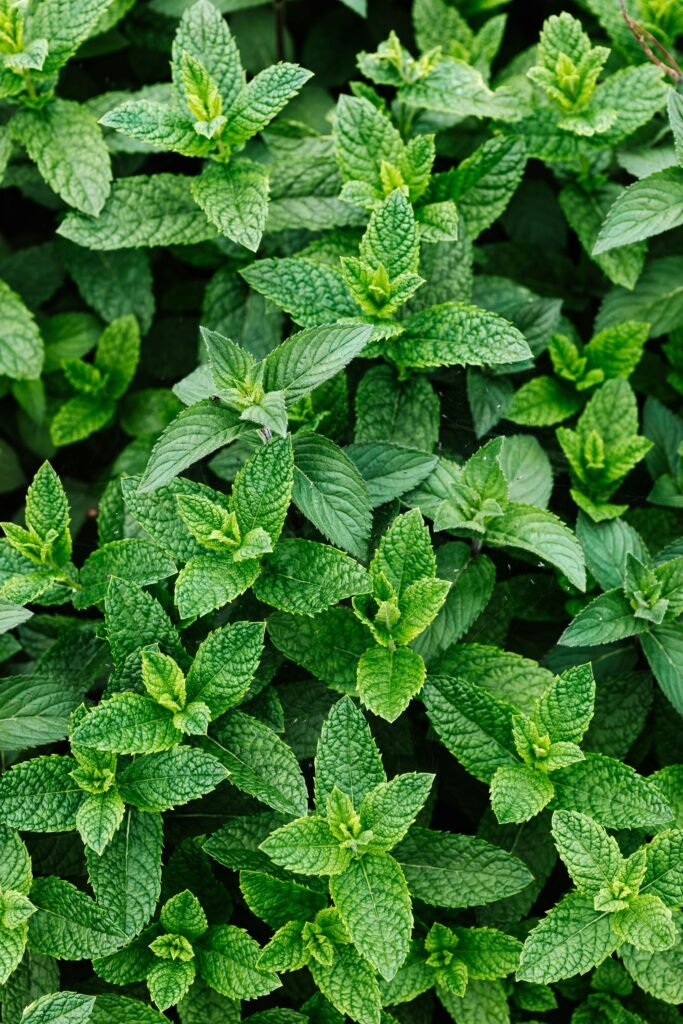3. Peppermint (Mentha piperita)
The Medicinal Value of Peppermint: A Comprehensive Guide
Peppermint (Mentha × piperita), a hybrid mint, is a plant widely recognized for its aromatic qualities and therapeutic benefits. For centuries, it has been used in traditional medicine for its soothing and healing properties. Modern scientific research supports many of these traditional uses, revealing a complex profile of bioactive compounds that contribute to its medicinal value.
Medicinal Value: A Scientific Perspective
Peppermint’s medicinal properties are primarily derived from its essential oil,
which contains a variety of bioactive compounds including menthol, menthone, and menthyl acetate. These compounds contribute to peppermint’s antispasmodic, analgesic, anti-inflammatory, and antimicrobial effects.
- Antispasmodic Properties: Menthol, the most abundant compound in peppermint oil, acts on the smooth muscles of the gastrointestinal tract. It works by blocking calcium channels, which helps to reduce muscle contractions and spasms, making it effective in alleviating symptoms of irritable bowel syndrome (IBS) and other digestive disorders.
- Analgesic Effects: Menthol also has analgesic properties. When applied topically, it activates cold-sensitive TRPM8 receptors in the skin, providing a cooling sensation that can reduce pain perception. This makes peppermint oil useful for relieving tension headaches and muscle pain.
- Anti-inflammatory and Antimicrobial: Peppermint oil exhibits significant anti-inflammatory and antimicrobial activities. It inhibits the growth of various bacteria and fungi, which supports its use in treating infections and skin conditions.
- Digestive Aid: Peppermint oil stimulates bile flow and digestive enzymes, enhancing digestion and nutrient absorption. It also relaxes the gastrointestinal tract, reducing symptoms of bloating and gas.
Therapeutic Uses of Peppermint
Peppermint can be used to treat a variety of ailments, ranging from digestive issues to headaches and respiratory conditions. Here are some common diseases and conditions that peppermint can help alleviate, along with detailed instructions on how to use it:
- Irritable Bowel Syndrome (IBS)
- Usage: Enteric-coated peppermint oil capsules are recommended to prevent the oil from being released in the stomach, where it can cause heartburn. The capsules ensure that the oil is released in the intestines, where it can exert its antispasmodic effects.
- Dosage: Typically, one to two capsules (0.2 to 0.4 mL of peppermint oil) taken three times daily before meals. It’s important to follow the dosage instructions provided by the product or healthcare provider.
- Tension Headaches
- Usage: Peppermint oil can be applied topically to relieve headaches. Dilute a few drops of peppermint oil with a carrier oil (such as jojoba or almond oil) to prevent skin irritation.
- Application: Gently massage the diluted oil onto the temples and the back of the neck. The cooling effect of menthol provides relief by improving blood flow and relaxing tense muscles.
- Digestive Problems
- Usage: Peppermint tea can help with indigestion, bloating, and gas.
- Preparation: Steep one teaspoon of dried peppermint leaves or one peppermint tea bag in a cup of boiling water for 10-15 minutes. Drink the tea up to three times a day after meals.
- Respiratory Issues
- Usage: Inhaling steam with peppermint oil can help relieve congestion and sinusitis.
- Method: Add a few drops of peppermint oil to a bowl of hot water. Lean over the bowl, cover your head with a towel, and inhale the steam for 5-10 minutes. Be careful to avoid burns from the hot water.
- Muscle Pain and Soreness
- Usage: Peppermint oil can be used in a massage oil blend for sore muscles.
- Preparation: Mix a few drops of peppermint oil with a carrier oil and massage into the affected area. Alternatively, add a few drops to a warm bath for a soothing soak.
- Skin Conditions
- Usage: Peppermint oil’s antimicrobial properties make it useful for treating minor skin infections and reducing itching.
- Application: Dilute peppermint oil with a carrier oil and apply to the affected area. For itching, a combination of peppermint and lavender oil can provide additional relief.
Peppermint, with its rich profile of bioactive compounds, offers a variety of medicinal benefits. Its antispasmodic, analgesic, anti-inflammatory, and antimicrobial properties make it a versatile remedy for many common ailments. Whether taken internally as a tea or capsule, or applied topically as an oil, peppermint is a natural and effective option for improving health and well-being. As with any herbal remedy, it is important to use peppermint appropriately and consult with a healthcare provider, especially for chronic conditions or when taking other medications.




